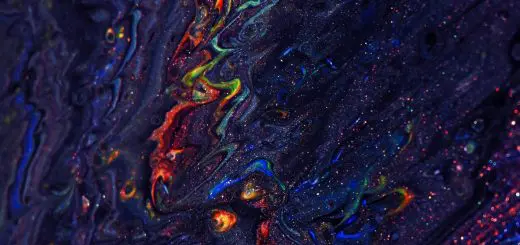The Future of Remote Sensing Technologies

Looking for more amazing products? Check out our online store and explore our collection here! Happy shopping!
Before diving in, please note: This post is for informational purposes only. If you’d like to know more about how we approach topics, feel free to check out our friendly Disclaimer Page.
Hey there, amazing readers! 
We’re committed to delivering quality posts, and your support (even just sticking around despite the ads) means everything to us. So, bear with us, and thanks for helping us keep the good vibes rolling. Now, on to the fun stuff!
TRANSLATE BUTTON AT THE END OF THE ARTICLE
Understanding Remote Sensing Technologies
Remote sensing technologies involve the use of sensors to collect data from a distance without direct physical contact with the object or area being observed.
These sensors can be mounted on satellites, drones, aircraft, or ground-based platforms to capture information about the Earth’s surface, atmosphere, and oceans.
The data collected is then processed and analyzed to generate valuable insights about the environment.
Remote sensing technologies have revolutionized the way we study and monitor the Earth, providing researchers with a wealth of information that was previously inaccessible.
Advancements in Remote Sensing Technology
Advancements in remote sensing technology have been rapid and transformative in recent years.
From improved sensor resolution to the development of hyperspectral and LiDAR (Light Detection and Ranging) technologies, the capabilities of remote sensing systems have grown exponentially.
These advancements have enabled researchers to gather more detailed and accurate information about the Earth’s surface and atmosphere.
Additionally, the integration of artificial intelligence and machine learning algorithms has enhanced the analysis of remote sensing data, allowing for more efficient and precise interpretation of complex environmental phenomena.
Applications of Remote Sensing in Various Fields
Remote sensing technologies have a wide range of applications across various fields, including agriculture, forestry, urban planning, disaster management, climate monitoring, and environmental conservation.
In agriculture, remote sensing is used to monitor crop health, predict yields, and optimize irrigation practices.
Forestry agencies use remote sensing to assess forest cover, detect deforestation, and monitor biodiversity.
Urban planners utilize remote sensing data to plan infrastructure development, monitor urban sprawl, and assess environmental impacts.
Remote sensing also plays a critical role in disaster management by providing real-time information during emergencies such as wildfires, floods, and earthquakes.
Evolution of Remote Sensing Techniques
The evolution of remote sensing techniques has been driven by technological advancements and the increasing demand for more accurate and timely environmental information.
Early remote sensing methods, such as aerial photography, have evolved into sophisticated satellite-based systems capable of capturing high-resolution images of the Earth’s surface.
The development of hyperspectral imaging, which captures images across hundreds of spectral bands, has enabled researchers to extract detailed information about land cover, vegetation health, and mineral composition.
LiDAR technology, on the other hand, uses laser pulses to create 3D models of terrain, allowing for precise elevation mapping and analysis.
Impact of Remote Sensing on Environmental Studies
Remote sensing has had a profound impact on environmental studies by providing researchers with valuable data to understand and monitor global environmental changes.
The ability to observe the Earth from a distance has allowed scientists to track deforestation, monitor land use changes, assess the health of coral reefs, and study the effects of climate change.
Remote sensing data has also been instrumental in wildlife conservation efforts, helping researchers identify habitat loss, track animal populations, and combat poaching.
By providing a comprehensive view of the Earth’s ecosystems, remote sensing has become an essential tool in environmental research and conservation.
Future Trends in Remote Sensing Technologies
The future of remote sensing technologies is promising, with several key trends shaping the field.
One of the most significant trends is the miniaturization of sensors, allowing for the development of smaller and more affordable remote sensing platforms.
This trend is expected to increase the accessibility of remote sensing technology to a wider range of users, including researchers, conservationists, and policymakers.
Another important trend is the integration of remote sensing with other technologies such as drones, artificial intelligence, and blockchain, enabling more efficient data collection, analysis, and sharing.
Additionally, the development of next-generation satellites with enhanced capabilities for monitoring climate change, natural disasters, and biodiversity loss is expected to drive further advancements in remote sensing technology.
Challenges and Opportunities in Remote Sensing
While remote sensing technologies offer numerous opportunities for environmental monitoring and research, they also present several challenges.
One of the primary challenges is the processing and analysis of large volumes of remote sensing data, which requires sophisticated algorithms and computational resources.
Additionally, issues such as data privacy, data sharing, and data quality assurance must be addressed to ensure the reliability and accuracy of remote sensing information.
Opportunities in remote sensing include the development of new sensors and platforms, the integration of emerging technologies, and the collaboration between different stakeholders to address global environmental challenges.
By overcoming these challenges and seizing these opportunities, remote sensing has the potential to revolutionize environmental monitoring and management in the years to come.
Remote Sensing in the Era of Big Data
The era of big data has had a profound impact on remote sensing technologies, enabling the collection, storage, and analysis of massive amounts of environmental data.
The integration of remote sensing with big data analytics has revolutionized the way researchers study and monitor the Earth, providing unprecedented insights into complex environmental processes.
By leveraging advanced data processing techniques, researchers can extract valuable information from remote sensing data, such as trends, patterns, and anomalies.
This wealth of information can be used to inform policy decisions, guide conservation efforts, and predict environmental changes with greater accuracy.
In the era of big data, remote sensing technologies play a crucial role in harnessing the power of information to address pressing environmental challenges.
Remote Sensing and Climate Change Monitoring
Climate change monitoring is one of the key applications of remote sensing technologies, providing researchers with critical data to track and assess the impacts of global climate change.
Remote sensing tools, such as satellites and airborne sensors, enable scientists to monitor changes in temperature, precipitation, sea level, ice cover, and vegetation cover on a global scale.
By analyzing long-term remote sensing data, researchers can detect trends and patterns related to climate change, such as glacier retreat, sea ice loss, and changes in land cover.
This information is essential for understanding the drivers of climate change, evaluating its impacts, and developing strategies to mitigate its effects.
Remote sensing technology will continue to play a vital role in climate change monitoring, providing essential data for climate scientists, policymakers, and the public.
Emerging Technologies in Remote Sensing
Emerging technologies are driving innovation in the field of remote sensing, opening up new possibilities for environmental monitoring and research.
One such technology is hyperspectral imaging, which captures images across a wide range of spectral bands, allowing for more detailed analysis of land cover, vegetation health, and mineral composition.
Another emerging technology is synthetic aperture radar (SAR), which uses radar signals to create high-resolution images of the Earth’s surface, regardless of weather conditions or time of day.
These technologies are revolutionizing the way researchers study the Earth, providing new insights into environmental processes and phenomena.
By embracing emerging technologies, remote sensing is poised to advance our understanding of the natural world and address complex environmental challenges in the years to come.
Remote Sensing for Disaster Management
Remote sensing technologies play a crucial role in disaster management by providing real-time information and situational awareness during emergencies such as wildfires, floods, earthquakes, and hurricanes.
Satellite imagery and aerial surveys enable first responders and emergency managers to assess the extent of damage, identify areas of concern, and prioritize response efforts.
Remote sensing data can also be used to monitor disaster recovery, track changes in the environment post-disaster, and assess the effectiveness of relief efforts.
By leveraging remote sensing technology, disaster management agencies can make informed decisions, allocate resources efficiently, and save lives in times of crisis.
The integration of remote sensing with other technologies, such as geographic information systems (GIS) and unmanned aerial vehicles (UAVs), enhances the effectiveness of disaster management operations and improves overall disaster resilience.
Remote Sensing for Sustainable Development
Remote sensing technologies are essential tools for sustainable development, enabling researchers, policymakers, and practitioners to monitor and manage natural resources, assess environmental impacts, and promote sustainable practices.
By providing detailed information about land cover, vegetation health, water quality, and air pollution, remote sensing data supports decision-making processes that prioritize environmental conservation and sustainable development.
Remote sensing is used to monitor deforestation, assess urban sprawl, track changes in agricultural practices, and identify areas of environmental degradation.
By integrating remote sensing data with socio-economic indicators and environmental policies, stakeholders can develop strategies for sustainable land use, conservation planning, and climate adaptation.
Remote sensing plays a vital role in achieving the United Nations Sustainable Development Goals, contributing to a more resilient, equitable, and sustainable future for all.
Conclusion
In conclusion, remote sensing technologies have revolutionized the way we study and monitor the Earth, providing valuable insights into environmental processes and phenomena.
Advancements in remote sensing technology, such as hyperspectral imaging and LiDAR, have enhanced our ability to collect and analyze environmental data with greater precision and accuracy.
Remote sensing applications span a wide range of fields, including agriculture, forestry, disaster management, climate monitoring, and sustainable development.
The future of remote sensing is promising, with emerging technologies and trends driving innovation in environmental research and monitoring.
By addressing challenges and seizing opportunities in remote sensing, we can harness the power of information to address global environmental challenges and create a more sustainable future for generations to come.

The Enlightenment Journey is a remarkable collection of writings authored by a distinguished group of experts in the fields of spirituality, new age, and esoteric knowledge.
This anthology features a diverse assembly of well-experienced authors who bring their profound insights and credible perspectives to the forefront.
Each contributor possesses a wealth of knowledge and wisdom, making them authorities in their respective domains.
Together, they offer readers a transformative journey into the realms of spiritual growth, self-discovery, and esoteric enlightenment.
The Enlightenment Journey is a testament to the collective expertise of these luminaries, providing readers with a rich tapestry of ideas and information to illuminate their spiritual path.
Our Diverse Expertise
While our primary focus is on spirituality and esotericism, we are equally passionate about exploring a wide range of other topics and niches 

To ensure we provide the most accurate and valuable insights, we collaborate with trusted experts in their respective domains 
Our blog originally focused on spirituality and metaphysics, but we’ve since expanded to cover a wide range of niches. Don’t worry—we continue to publish a lot of articles on spirituality! Frequently visit our blog to explore our diverse content and stay tuned for more insightful reads.
Hey there, amazing reader! 
Check out our store here and take a peek at some of our featured products below! Thanks for being awesome!











